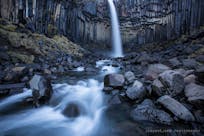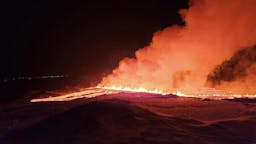
The Northern Renaissance and Italian Renaissance: Analyzing the Differences

The Renaissance, a cultural and artistic movement that swept through Europe in the 14th to 17th centuries, is often divided into two distinct periods: northern renaissance vs italian renaissance. While both periods shared similar goals and ideals, they developed distinct characteristics, styles, and themes that set them apart. In this article, we'll delve into the differences between the Northern Renaissance and Italian Renaissance, exploring the unique features of each period.
Italian Renaissance (14th-16th centuries)
The Italian Renaissance, which began in the 14th century, was centered in Italy, particularly in cities like Florence, Rome, and Venice. This period was marked by a revival of classical Greek and Roman culture, as well as a focus on humanism, individualism, and secularism.
Characteristics:
Emphasis on classical forms and proportions
Use of perspective and sfumato to create depth and volume
Focus on human anatomy and the nude figure
Development of techniques like fresco and oil painting
Patronage by wealthy merchants and nobles
Artists: Leonardo da Vinci, Michelangelo, Raphael, Titian
Northern Renaissance (15th-17th centuries)
The Northern Renaissance, which began in the 15th century, was centered in Northern Europe, particularly in cities like Bruges, Antwerp, and Amsterdam. This period was marked by a focus on realism, detail, and symbolism, as well as a strong influence from the Gothic style. Click Here
Characteristics:
Emphasis on realism and attention to detail
Use of oil painting and woodcuts to create intricate, detailed works
Focus on landscapes, still lifes, and genre scenes
Development of techniques like glazing and scumbling
Patronage by wealthy merchants and the emerging middle class
Artists: Jan van Eyck, Hieronymus Bosch, Albrecht Dürer, Pieter Bruegel the Elder
Key Differences:
Style: Italian Renaissance art tends to be more classical, elegant, and harmonious, while Northern Renaissance art is often more detailed, intricate, and symbolic.
Techniques: Italian Renaissance artists developed techniques like fresco and sfumato, while Northern Renaissance artists excelled in oil painting and woodcuts.
Themes: Italian Renaissance art often focused on mythology, classical themes, and the human form, while Northern Renaissance art explored landscapes, still lifes, and genre scenes.
Patronage: Italian Renaissance art was often patronized by wealthy nobles and merchants, while Northern Renaissance art was supported by the emerging middle class and wealthy merchants.
Influence: The Italian Renaissance had a profound influence on Western art, while the Northern Renaissance had a more regional impact, shaping the development of art in Northern Europe.
Conclusion:
The Italian Renaissance and Northern Renaissance were two distinct periods that shared similar goals and ideals, but developed unique characteristics, styles, and themes. While the Italian Renaissance was marked by a revival of classical forms and a focus on humanism, the Northern Renaissance was characterized by a focus on realism, detail, and symbolism. Understanding the differences between these two periods provides a deeper appreciation for the complexities and nuances of Renaissance art.
Other interesting blogs
Chasing Waterfalls in Iceland
Iceland is spectacular in so many ways and Icelandic nature is quite unique with its vast landscape, volcanic activity, geothermal areas, glacier lagoons and sceneries, black sand beaches and spectRead moreSænautasel Turf House in the Highland of Iceland
In my search for turf houses around Iceland, I visited Sænautasel, which is a rebuilt turf house on Jökuldalsheiði heath in the highland of Iceland. It is, in my opinion, an extremely cute turf hoRead moreThe Dynamic Plant Lupine
People have been asking me where to find lupines in Iceland. If you like them you should be able to find them easily in Iceland in summer. They are in bloom and visible almost wherever you drive aroRead more

Download Iceland’s biggest travel marketplace to your phone to manage your entire trip in one place
Scan this QR code with your phone camera and press the link that appears to add Iceland’s biggest travel marketplace into your pocket. Enter your phone number or email address to receive an SMS or email with the download link.















